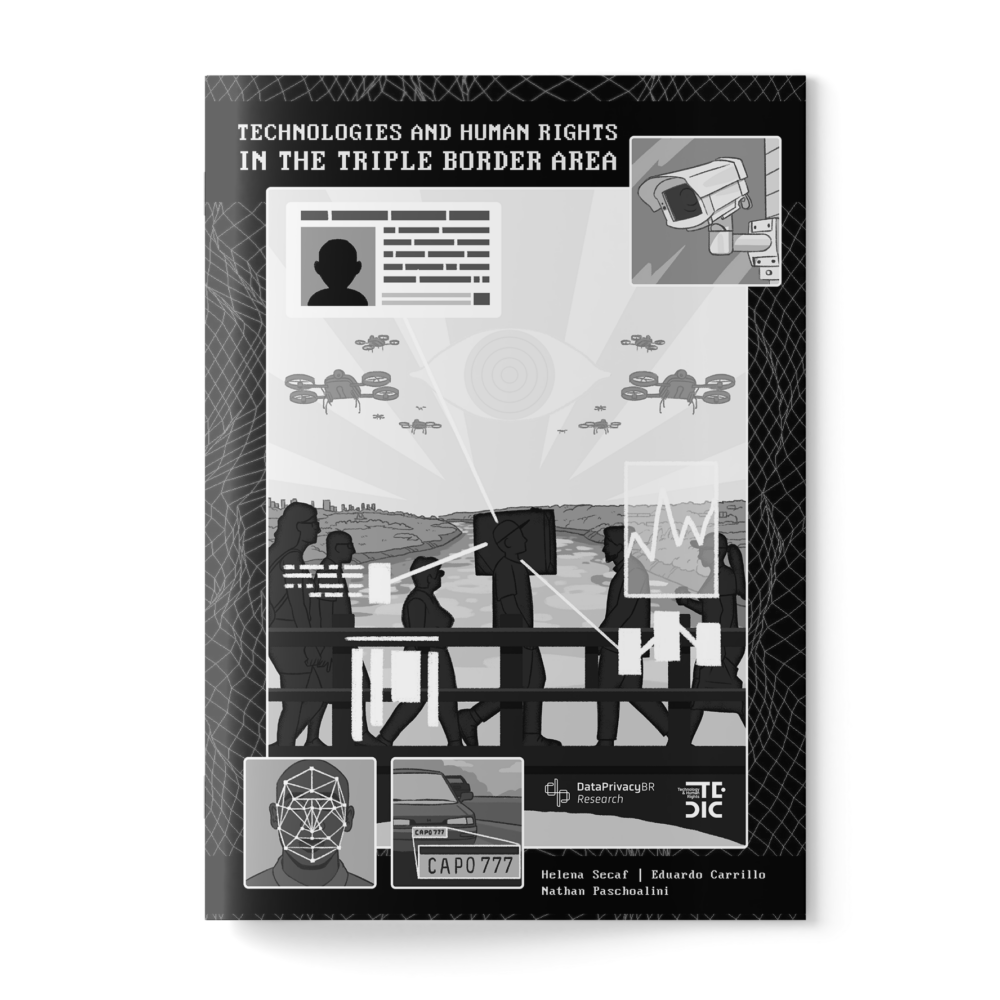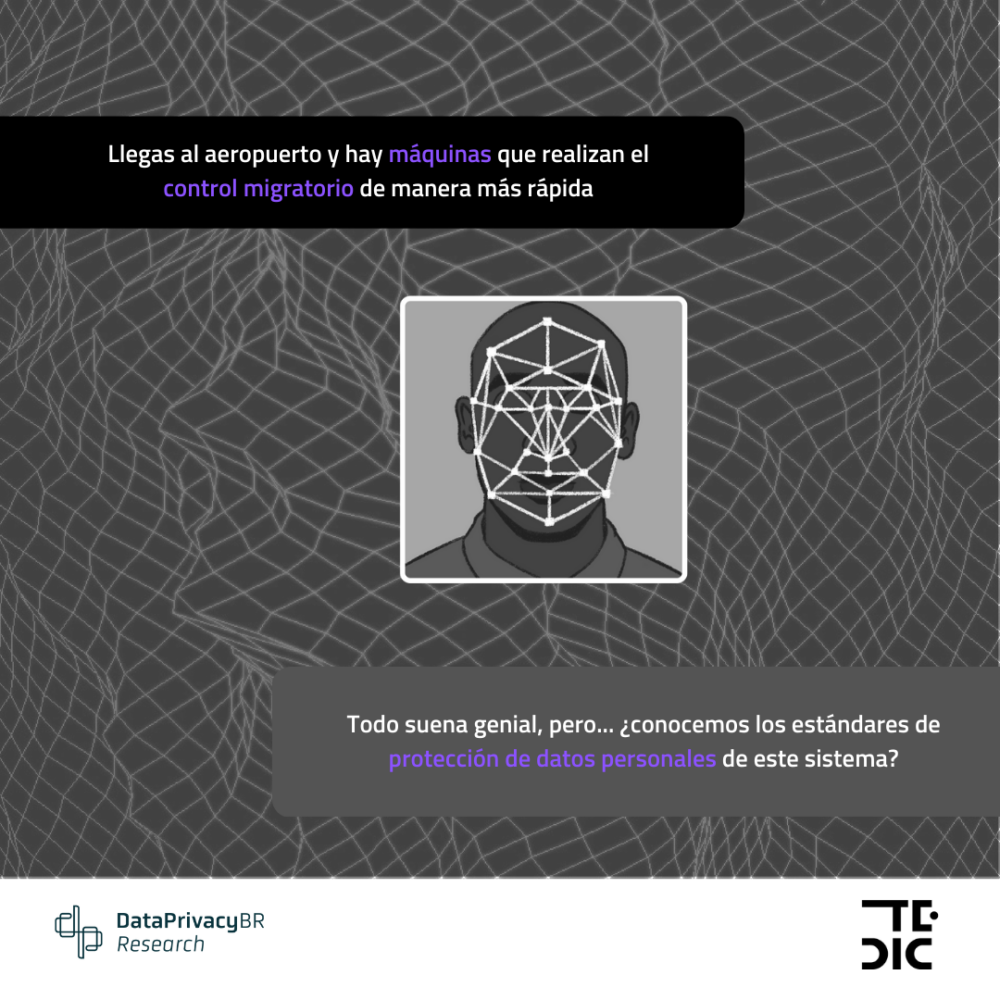
Due to the increasing trend of implementing digital security policies, TEDIC and Data Privacy Brasil have developed a series of actions aimed at generating greater scrutiny, with a human rights perspective, in deploying surveillance technologies in the Triple Border (An area shared by Argentina, Brazil and Paraguay) and for public security and migration.
The interest of the organizations arises from research conducted last year that sought to understand the implementation and degree of involvement of different public and private actors in the Centro Integrado de Operaciones de Frontera (CIOF) program. CIOF is a Brazilian public security program aimed at combating transnational organized crime and integrating representatives from various public security agencies to centralize information under one roof.
This work constitutes an extension of last year’s research, now focusing on two new security and technology programs in the region. The study sought to characterize two security programs and the narratives surrounding them, as well as determine their actual usefulness for the goals they aim to achieve: Muralha Inteligente (Brazil) and the Automated Facial Recognition Migration System (SMARF) (Paraguay).
Muralha Inteligente aims to implant, investigate and develop intelligent technology solutions to combat better smuggling, mismanagement, and trafficking of weapons and drugs in the Triple Border. Muralha Inteligente is one of the arms of a larger project called “Fronteira Tech”, a border surveillance program promoting digital technologies with a public security focus.
SMARF is a new migration control technology implemented by the Paraguayan government starting in 2020. It consists of an automated mechanism for registering people moving across borders based on facial recognition. It was initially deployed in the Triple Border area on the Paraguayan side and then transferred to the Silvio Pettirossi International Airport.
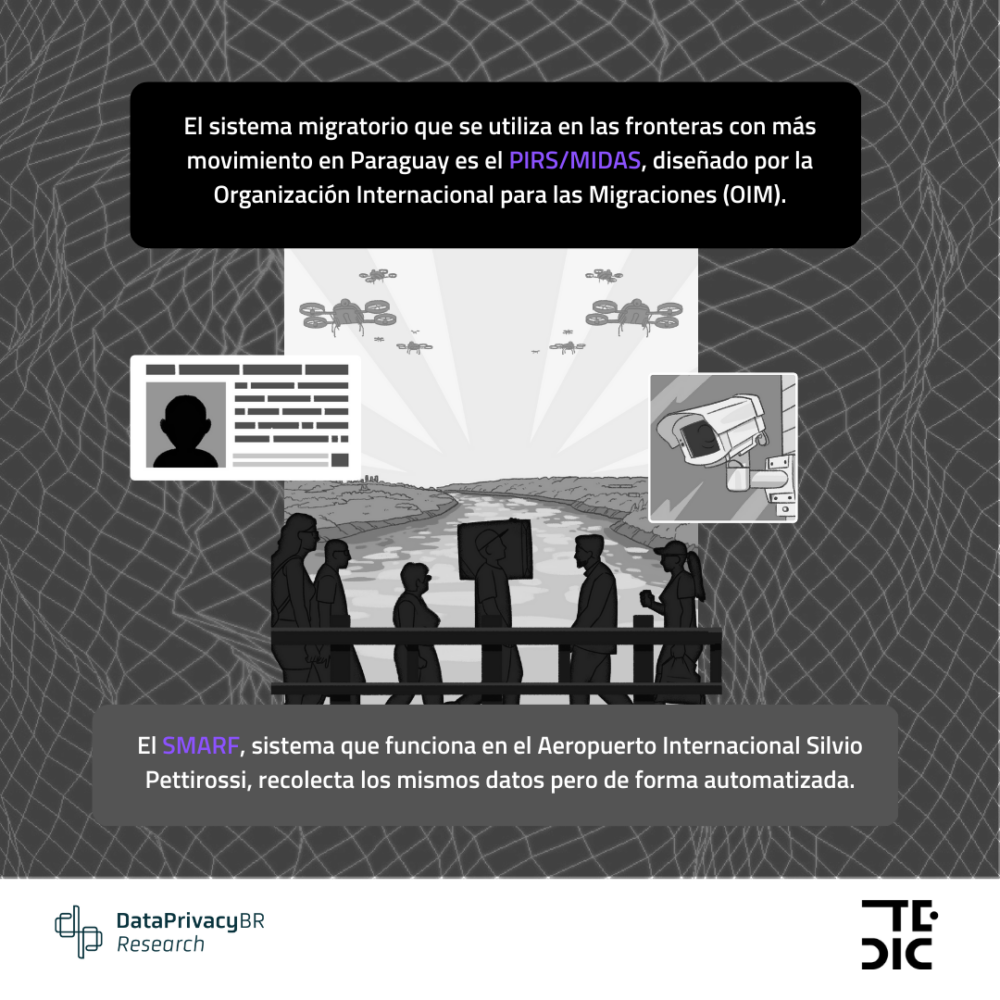
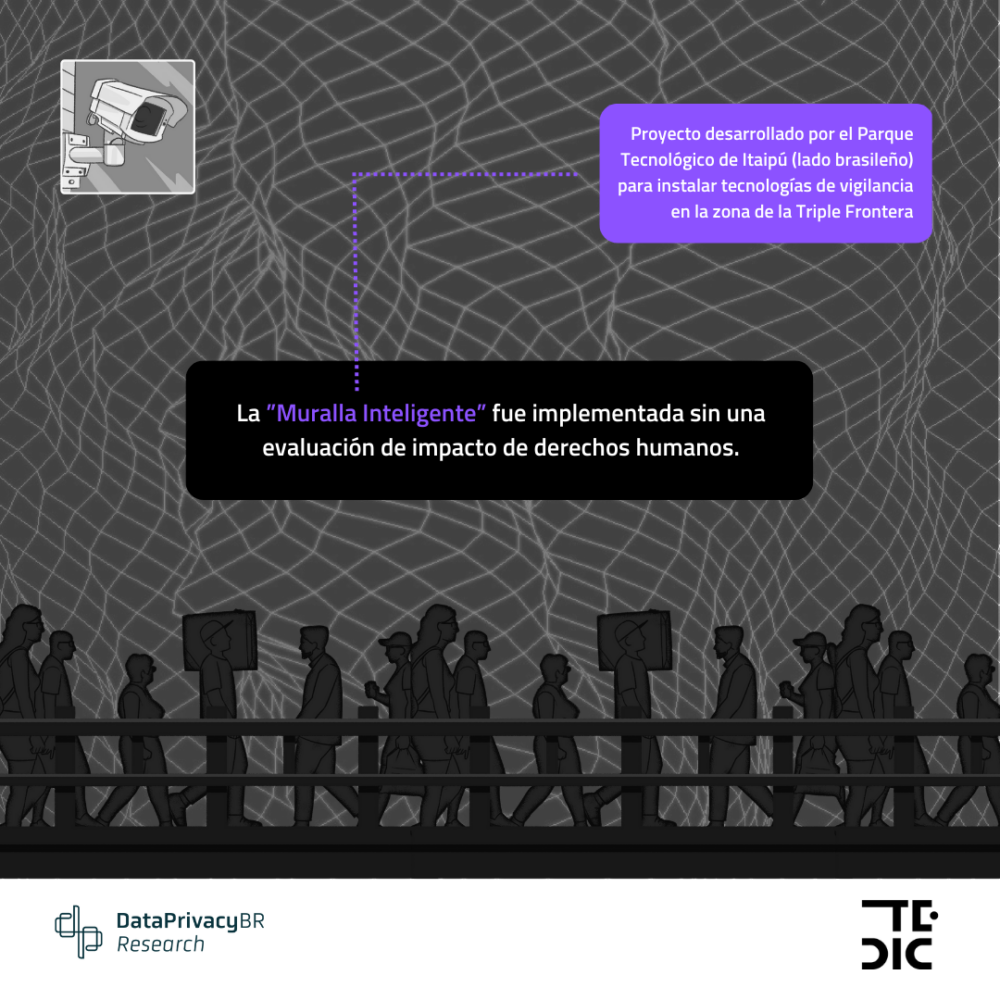
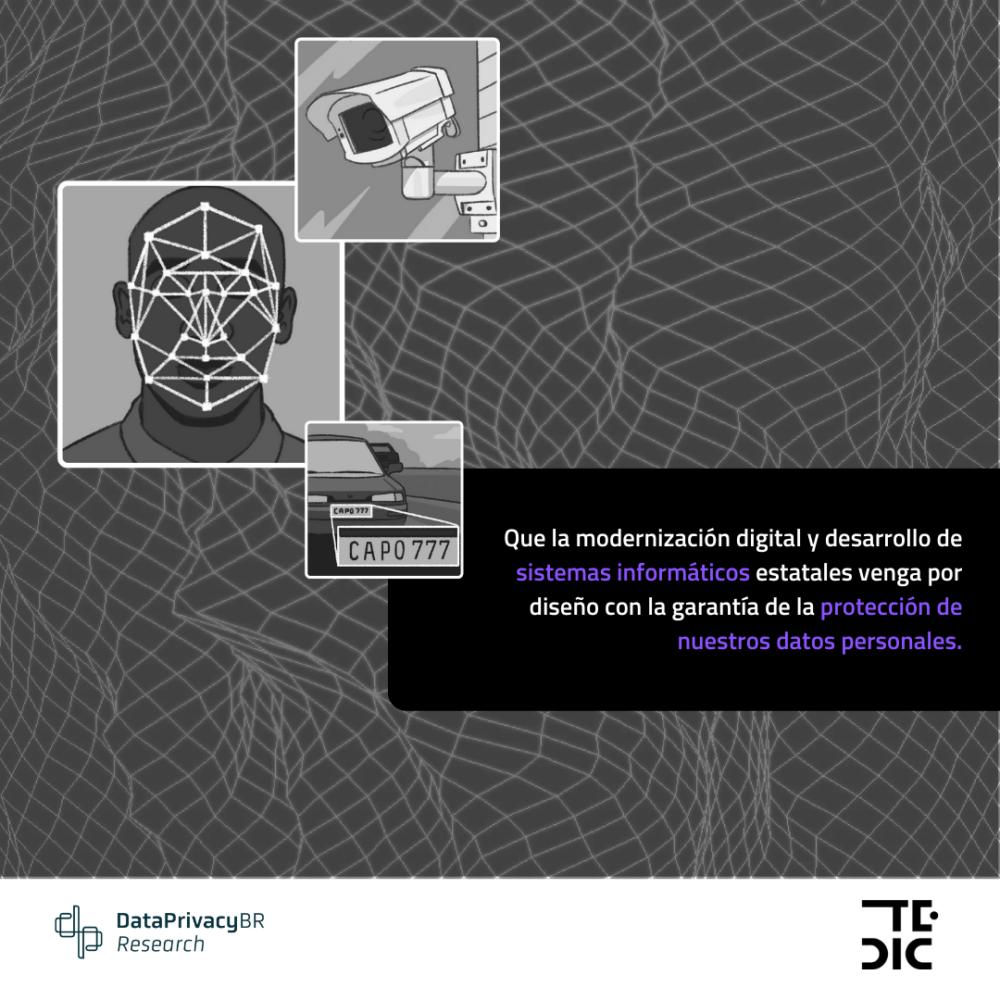
Among the main findings of the research:
- The narrative of efficiency and speed dominates the deployment of digital technologies for border control. Such efficiency is an absolute value that tends to ignore an open debate to identify the risk of human rights violations and mitigate them as appropriate.
- Neither of the two programs develops Human Rights Impact Assessments (HRIA). In the case of the Muralha Inteligente program, there was no mapping of possible human rights risks within the project. In the case of SMARF, there is doubt regarding the need for HRIA since similar initiatives already exist, so the implementation of tools like this is considered redundant by the General Direction of Migrations.
- Neither of the two programs have privacy policies.
- Although some institutions from both countries responded to FOIA requests in an exhaustive manner, there is still a component of lack of transparency that characterizes both investigations.
- On the Brazilian side, the justification is based on the argument that “national security deserves confidentiality”.
- On the Paraguayan side, there is a need to optimize the way in which public policies with digital components can be tracked at all times and not necessarily only at the request of those interested in the topic.
- With regards to the digital component-based migration policies on the Paraguayan side, there is an institutional disposition to develop its own biometric system to break free from the maintenance of the current PIRS-MIDAS biometric system, which is a migration biometric system provided by the International Organization for Migration.
The work has been possible thanks to the support of the organization Privacy International.
Read the complete investigation here!
